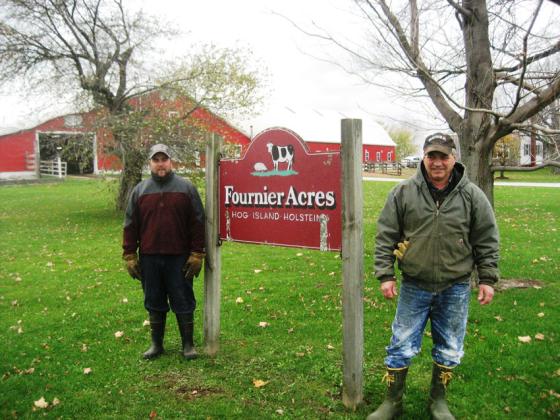Posted May 30, 2014 at 11:17am by Pam Boyd
VHCB Awards $4.6 Million in Farmland Conservation Grants

The VHCB grants will be used to purchase development rights from farm owners, permanently protecting the land from development and providing capital to the farmers for expansion, diversification, debt reduction or retirement. The conservation of the farms will occur when the projects close.
The farms to be protected include operating dairies, commercial crop farms, beef farms, and farmland providing additional land base for existing farms. Five of the projects that received funding commitments involve pending transfers of farmland to new owners—transactions that will be facilitated by the sale of development rights.
One of the projects that will receive a grant was a portion of the R. J. Fournier and Sons farm, located in West Swanton, with 1,200 feet of shoreline and fabulous views of Lake Champlain’s Missisquoi Bay. The farm is an organic dairy and has been in the Fournier family for four generations. Because of the close proximity to the lake, the farm has instituted many practices to prevent agricultural runoff. The Fourniers grow no row crops, and plowed fields are always seeded to a cover crop before winter arrives.
Allen Karnatz, a staff person with the Vermont Land Trust, worked with the Fournier family to bring the project to the attention of VHCB.
“The Fournier farm epitomizes the Dairy of Distinction award,” said Karnatz in reference to the Vermont Agriculture Agency’s annual award program for beautiful farmsteads. “It’s a very tidy and well-managed farm. They transitioned their 90-cow herd to organic in 2004 and they grow unique forages such as a triticale–sudangrass mix. The 78 acres of prime soil can grow just about anything that grows in Vermont.”
Funding for VHCB’s farmland protection program comes from both federal and state sources. The federal funds comes to VHCB through the USDA Natural Resources Conservation Service (NRCS). State funding is from annual appropriations by the Vermont Legislature. In addition, eight of the farm projects brought supplemental non-VHCB funding, from private foundations, municipal conservation funds, landowner bargain sales, and private fundraising.
More information is available at: www.vhcb.org
